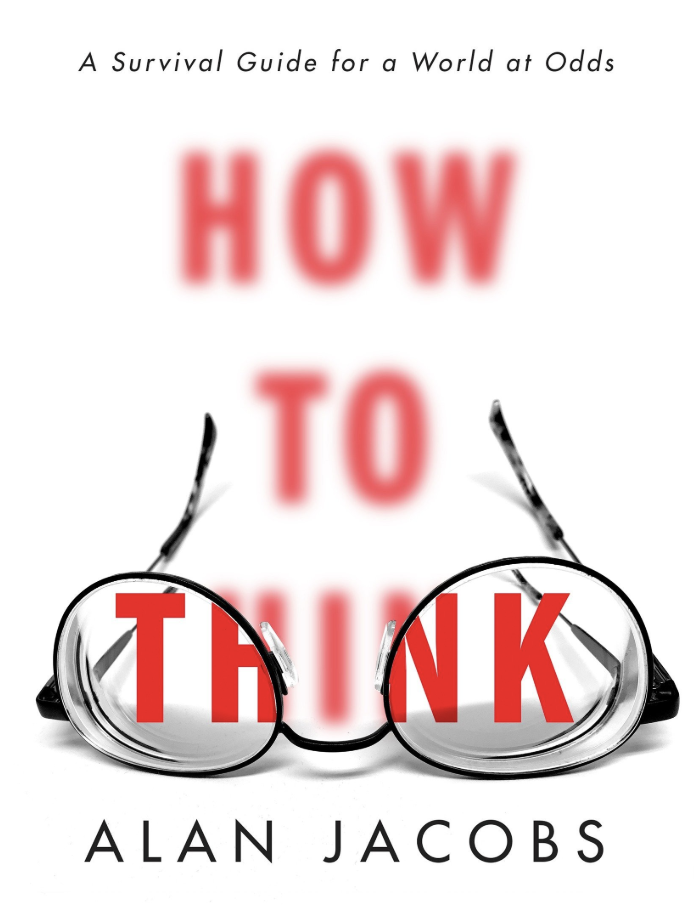I’m rereading Alan Jacobs’s fabulous How to Think this summer because I’m teaching it again in the fall. Below are my takeaways from the book’s introduction. After the break, you’ll find some prompts to help you personalize the takeaways.

- Thinking is hard. There are tons of ways to get it wrong. That’s why we don’t work at it (much less do it) even though we know it’s important.
- Thinking is the process that goes into making the decision, not the decision itself. It’s the work we did to come up with the answer, not the answer itself.
- Thinking is social. We never do it alone, and when we fail to think, we often do it because it’s socially discouraged.
- Thinking is emotional. Thinking is rational too. It’s just that it’s easy to make thinking one rather than both of these things.
- Thinking is oblique. That’s why the best way to approach thinking is not by contemplating thinking in itself but by approaching it indirectly.
- Thinking is ultimately moral because it’s primarily a matter of our wills.
- What’s a decision that requires less thinking than buying a car? What’s a decision that requires more genuine thought than which automobile to purchase?
- Choose a decision you’ve made in the last six months. Give an example of the all the thinking that you did before you actually reached a decision.
- Which larger groups do you think in common with? Are there any topics on which you disagree with these larger groups that you mostly agree with?
- What’s a decision you’ve made based on intuition and emotion? What’s a decision you’ve made when you tried to leave out emotion altogether? What were the results of those decisions?
- If Jacobs had wanted to support his assertion about thinking’s moral core with scripture, which verses would he have cited?
